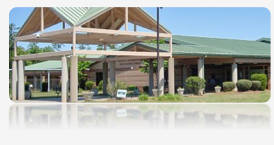 NASA Explorer Schools educator Barbara Dire from Forest Heights Elementary School led her school through another successful NASA Family Science Night. Forest Heights starts each school year with this event to introduce new families to NASA and rekindle the NASA spark. This year they had a Digital Learning Network session with NASA’s Jet Propulsion Laboratory located in Pasadena, Calif. The event stressed to the families that NASA still has a mission. Most of the parents thought the last shuttle mission meant the end of NASA. After the DLN session, students had a lot of fun constructing rockets. There were 212 students, parents and teachers present at this very successful NASA Family Science Night.
NASA Explorer Schools educator Barbara Dire from Forest Heights Elementary School led her school through another successful NASA Family Science Night. Forest Heights starts each school year with this event to introduce new families to NASA and rekindle the NASA spark. This year they had a Digital Learning Network session with NASA’s Jet Propulsion Laboratory located in Pasadena, Calif. The event stressed to the families that NASA still has a mission. Most of the parents thought the last shuttle mission meant the end of NASA. After the DLN session, students had a lot of fun constructing rockets. There were 212 students, parents and teachers present at this very successful NASA Family Science Night.
Month: September 2011
Engineering Design Challenge: Thermal Protection System Web Seminar For Teachers
As part of a series ofelectronic professional development experiences for educators, the NASAExplorer Schools project and the National Science Teacher Association arehosting a 90-minute live professional development Web seminar for educators on Sept. 28, 2011, at 6:30 p.m. EDT. Learnabout the science of heat transfer and heat dissipation related to NASAvehicles, and then be introduced to the engineering design challenge, ThermalProtection System where students design a thermal protection system and test itover a propane torch.
Quadratic Functions: Exploring Space Through Math — Weightless Wonder Web Seminar
 As part of a series of electronic professional development experiences for educators, NASA Explorer Schools and the LE&RN project are hosting a 60-minute Web seminar on Sept. 27, 2011, at 8 p.m. EDT. Investigate the characteristics of quadratic functions to solve real-world problems involving the parabolic flight path of NASA’s Weightless Wonder C-9 jet. Get an overview of a student investigation, solve related quadratic equations and evaluate and graph quadratic functions. A graphing calculator will be used to demonstrate concepts; however, you do not need a calculator for this professional development seminar.
As part of a series of electronic professional development experiences for educators, NASA Explorer Schools and the LE&RN project are hosting a 60-minute Web seminar on Sept. 27, 2011, at 8 p.m. EDT. Investigate the characteristics of quadratic functions to solve real-world problems involving the parabolic flight path of NASA’s Weightless Wonder C-9 jet. Get an overview of a student investigation, solve related quadratic equations and evaluate and graph quadratic functions. A graphing calculator will be used to demonstrate concepts; however, you do not need a calculator for this professional development seminar.Email questions about this seminar to NASA-Explorer-Schools@mail.nasa.gov.
Live Video Chat on September 27: ARGOS
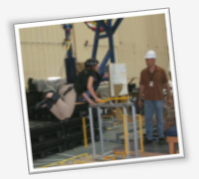 NASA Explorer Schools invites students in grades 9-12 from across the U.S. and Departments of Defense and State schools to participate in a special live video web chat with Larry Dungan, project manager and electrical engineer designer for the Active Response Gravity Offload System. Dungan will answer student questions about ARGOS, a computer-controlled overhead crane system that allows a human test subject to move in a simulated reduced-gravity environment, such as the moon, Mars or space.
NASA Explorer Schools invites students in grades 9-12 from across the U.S. and Departments of Defense and State schools to participate in a special live video web chat with Larry Dungan, project manager and electrical engineer designer for the Active Response Gravity Offload System. Dungan will answer student questions about ARGOS, a computer-controlled overhead crane system that allows a human test subject to move in a simulated reduced-gravity environment, such as the moon, Mars or space.NES Teachers Selected for Reduced Gravity Flight Recognition Opportunity
 Teachers from 14 NASA Explorer Schools have been selected for the 2011 School Recognition Award for their contributions to science, technology, engineering and mathematics education.
Teachers from 14 NASA Explorer Schools have been selected for the 2011 School Recognition Award for their contributions to science, technology, engineering and mathematics education.
A team of NASA personnel reviewed applications and recognized the schools for demonstrating exemplary classroom practices and finding innovative uses of NES resources to engage a broad school population. These schools were selected from more than 1300 schools that have registered participants in the NASA Explorer Schools project.
Three teachers from each school will travel to NASA’s Johnson Space Center in Houston next year to conduct experiments in microgravity aboard the agency’s reduced gravity aircraft. The experiments will examine how fluids with different viscosities behave in microgravity; the acceleration and inertia of objects; and how the absence of gravity affects mass and weight.
“This represents another innovative NASA project for teachers and students to engage in actual scientific investigations in a microgravity environment, similar to experiments conducted on the International Space Station,” said Shelley Canright, program manager for primary and secondary education at NASA Headquarters in Washington. “It successfully demonstrates and enhances participants’ academic knowledge in STEM.”
The schools selected are:
Amos Hiatt Middle School, Des Moines, Iowa
Charles T. Kranz Intermediate School, El Monte, Calif.
East Hartford-Glastonbury Magnet School, East Hartford, Conn.
Ellen Ochoa Learning Center, Cudahy, Calif.
Ferndale Middle School, High Point, N.C.
Forest Lake Elementary Technology Magnet School, Columbia, S.C.
Franke Park Elementary, Fort Wayne, Ind.
Jamestown High School, Jamestown, Pa.
Johnston Middle School, Houston
Key Peninsula Middle School, Lakebay, Wash.
Lakewood High School, Lakewood, Calif.
Mack Benn Jr. Elementary School, Suffolk, Va.
St. Mary’s Visitation School, Elm Grove, Wisc.
Woodrow Wilson Middle School, Glendale, Calif.
Watch this six-minute video that provides project information and shows previous winners aboard the reduced gravity aircraft.
Distance-Rate-Time Problems–Smart Skies Web Seminar
 As part of a series of electronic professional development experiences for educators, the NASA Explorer Schools project is hosting a 60-minute Web seminar, Smart Skies, on Sept. 22, 2011, at 8 p.m. EDT. Learn how to use an innovative air traffic control simulator to engage your students as they explore the mathematics involved in the role of an air traffic controller. In the three-plane problem featured in this lesson, the challenge is to change routes and speeds to line up the planes safely, with proper spacing, at a given route intersection.
As part of a series of electronic professional development experiences for educators, the NASA Explorer Schools project is hosting a 60-minute Web seminar, Smart Skies, on Sept. 22, 2011, at 8 p.m. EDT. Learn how to use an innovative air traffic control simulator to engage your students as they explore the mathematics involved in the role of an air traffic controller. In the three-plane problem featured in this lesson, the challenge is to change routes and speeds to line up the planes safely, with proper spacing, at a given route intersection.LRO Offers Sunrise View of Crater Tycho's Peak
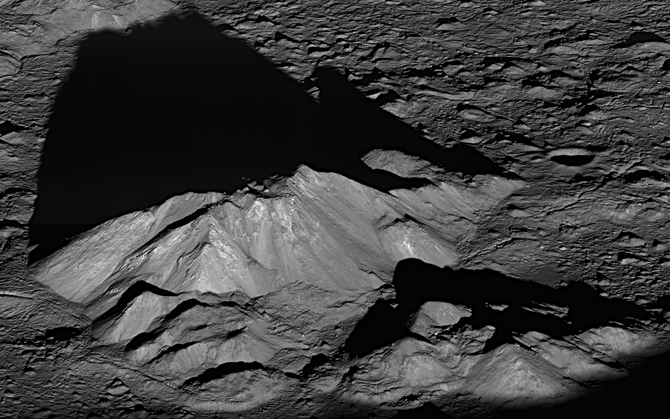 On June 10, 2011, NASA’s Lunar Reconnaissance Orbiter spacecraft pointed the LRO narrow angle cameras to capture a dramatic sunrise view of Tycho crater.
On June 10, 2011, NASA’s Lunar Reconnaissance Orbiter spacecraft pointed the LRO narrow angle cameras to capture a dramatic sunrise view of Tycho crater.A very popular target with amateur astronomers, Tycho is located at 43.37°S, 348.68°E, and is about 82 kilometers (51 miles) in diameter. The summit of the central peak (shown at left) is 2 kilometers (1.24 miles) above the crater floor. The distance from Tycho’s floor to its rim is about 4.7 kilometers (2.92 miles).
Link to the NASA Explorer Schools Virtual Campus home page.
A Cross-discipline Unit Using Radio Jove
 Vin Urbanowski, NASA Explorer Schools educator from the Academy of Information Technology & Engineering in Stamford, Conn., created a lesson, The Engineer Who Became an Artist: A Radio Jove-Inspired Unit Connecting STEM, Music and History. The lesson reinforces radio concepts by tracing the development of radio, in both radio astronomy and radio communications and helps students acquire familiarity with the audio signatures of various phenomena and operations.
Vin Urbanowski, NASA Explorer Schools educator from the Academy of Information Technology & Engineering in Stamford, Conn., created a lesson, The Engineer Who Became an Artist: A Radio Jove-Inspired Unit Connecting STEM, Music and History. The lesson reinforces radio concepts by tracing the development of radio, in both radio astronomy and radio communications and helps students acquire familiarity with the audio signatures of various phenomena and operations.Kepler Discovers a Planet with Two Suns
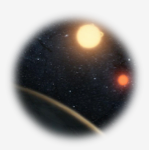 The existence of a world with a double sunset, as portrayed in the film Star Wars more than 30 years ago, is now scientific fact. NASA’s Kepler mission has made the first unambiguous detection of a circumbinary planet — a planet orbiting two stars — 200 light-years from Earth.
The existence of a world with a double sunset, as portrayed in the film Star Wars more than 30 years ago, is now scientific fact. NASA’s Kepler mission has made the first unambiguous detection of a circumbinary planet — a planet orbiting two stars — 200 light-years from Earth.
NASA Announces Design for New Deep Space Exploration System
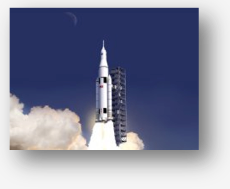 NASA is ready to move forward with the development of the Space Launch System — an advanced heavy-lift launch vehicle that will provide an entirely new national capability for human exploration beyond Earth’s orbit. The Space Launch System will give the nation a safe, affordable and sustainable means of reaching beyond our current limits and opening up new discoveries from the unique vantage point of space.
NASA is ready to move forward with the development of the Space Launch System — an advanced heavy-lift launch vehicle that will provide an entirely new national capability for human exploration beyond Earth’s orbit. The Space Launch System will give the nation a safe, affordable and sustainable means of reaching beyond our current limits and opening up new discoveries from the unique vantage point of space.
For more information, a video and related educational materials for a variety of grade levels visit the NES feature page.
